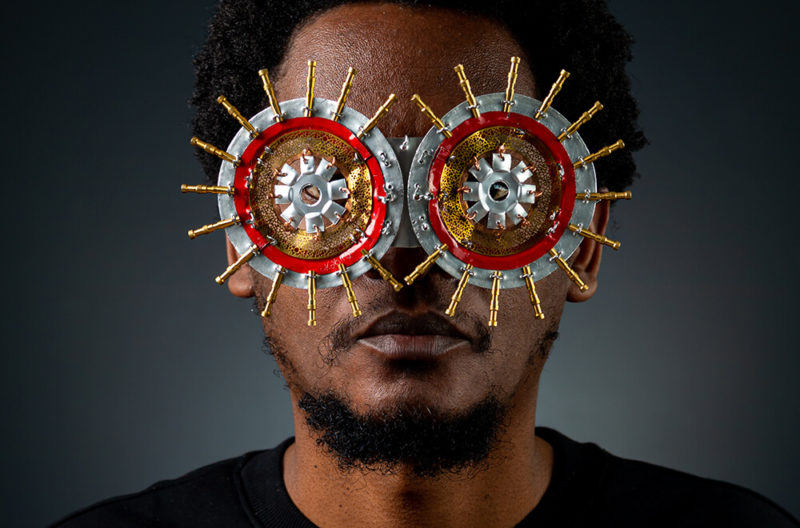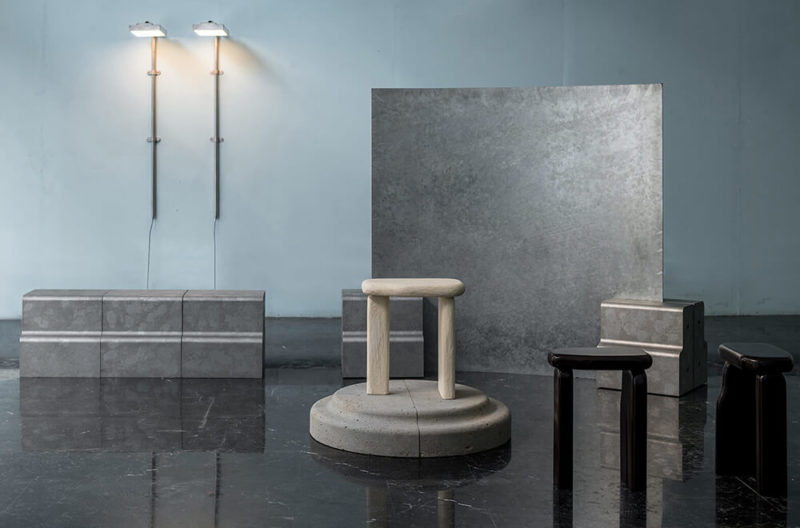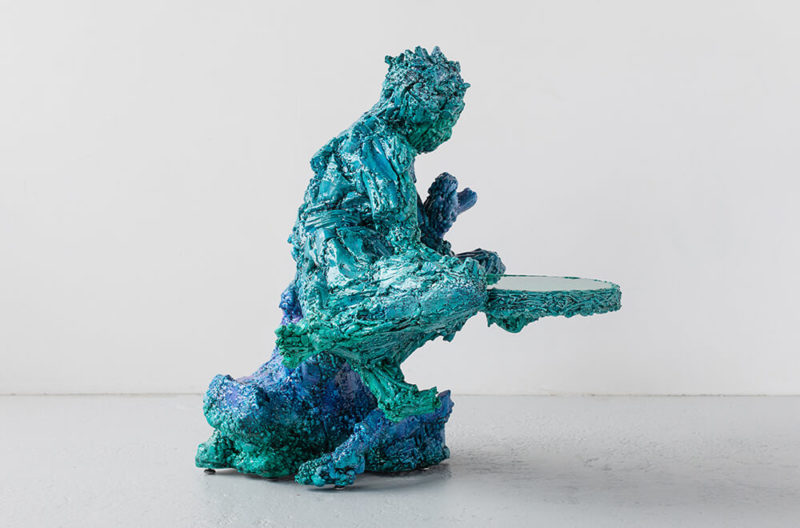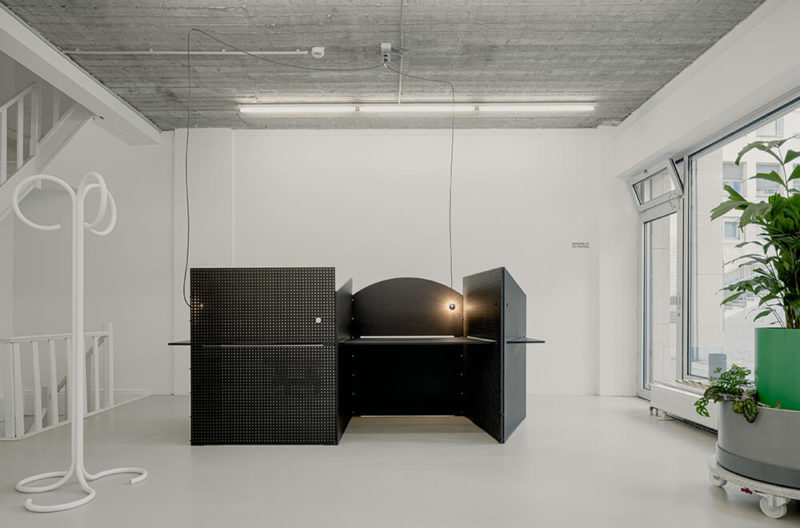Anton Alvarez: ‘The Remnants’
Producing his work on-site at 100 Bishopsgate, with a ten-tonne ceramic press named 'The Extruder' – Alvarez takes TDE through the process …
Brookfield Properties, 100 Bishopsgate, London
On view until March 2023
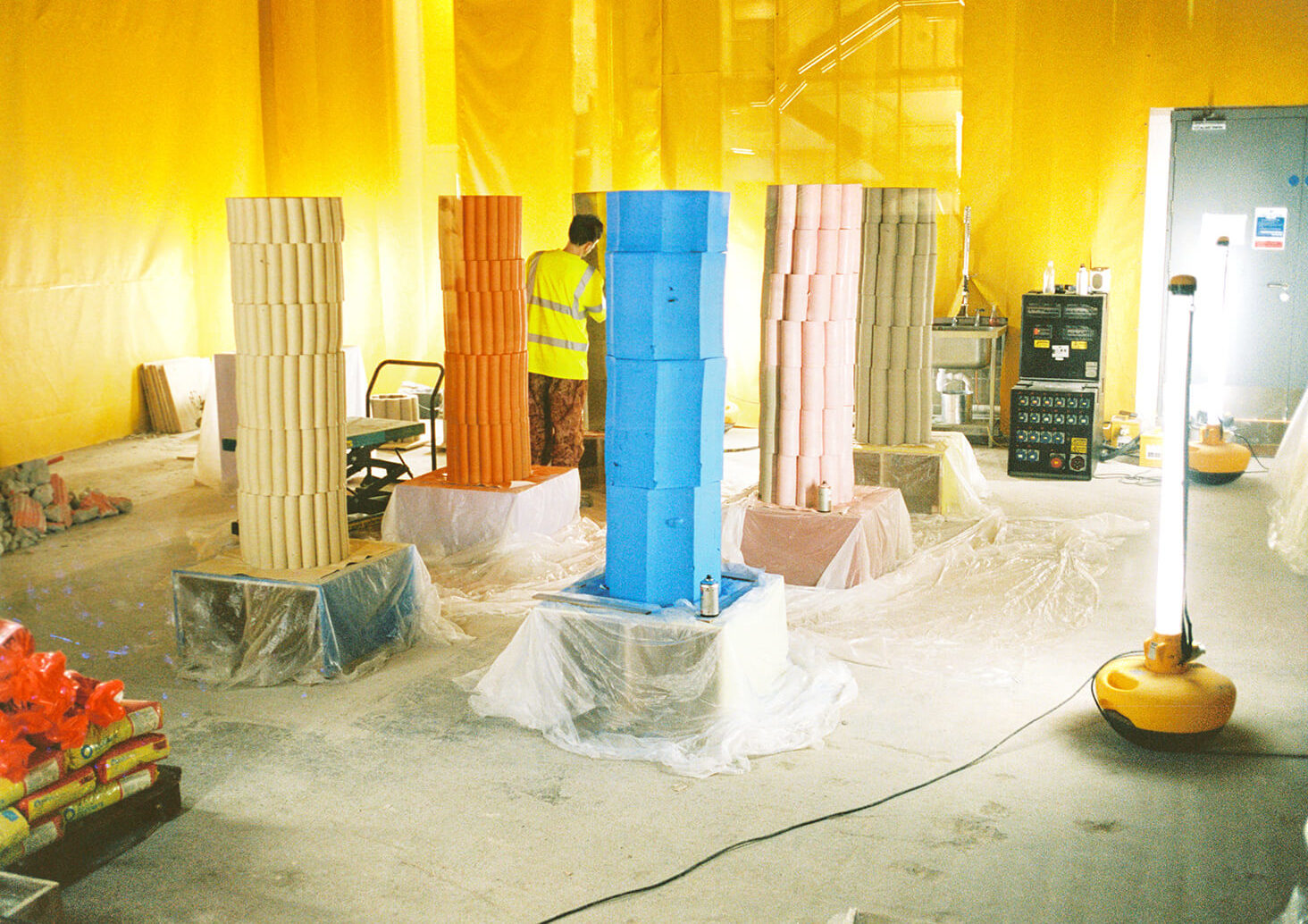
Anton Alvarez, ‘The Remnants at Brookfield Properties’, 2022
COURTESY: Anton Alvarez / PHOTOGRAPH: Isak Berglund Mattsson-Mårn
IN FEBRUARY, THE Chilean cabinet-maker turned artist Anton Alvarez transformed a retail unit within the shiny City of London edifice of Brookfield Properties’ 100 Bishopsgate, into a month-long pop up studio and performance space. Here he demonstrated to curious passers-by the mysteries of transforming once-used clay into viable material for new creation, aided by one of his ingenious self-built machines.
The ten-tonne ceramic press called ‘The Extruder’ squeezes out clay as if it were plasticine into the building blocks of a playful architecture. With these Alvarez, now based in Stockholm, has created a series of monumental, colourful pillars to grace the vestibule of the glass-walled corporate institution. Called ‘The Remnants’, the show relates both to the many-layered architectural history of the City of London, but in a sense also to the entire history of architecture – from the unfired adobe houses of South America and carved temples of Ancient Greece through to the present day. Through this project, craft, design and concept fuse. Alvarez talks us through the process.
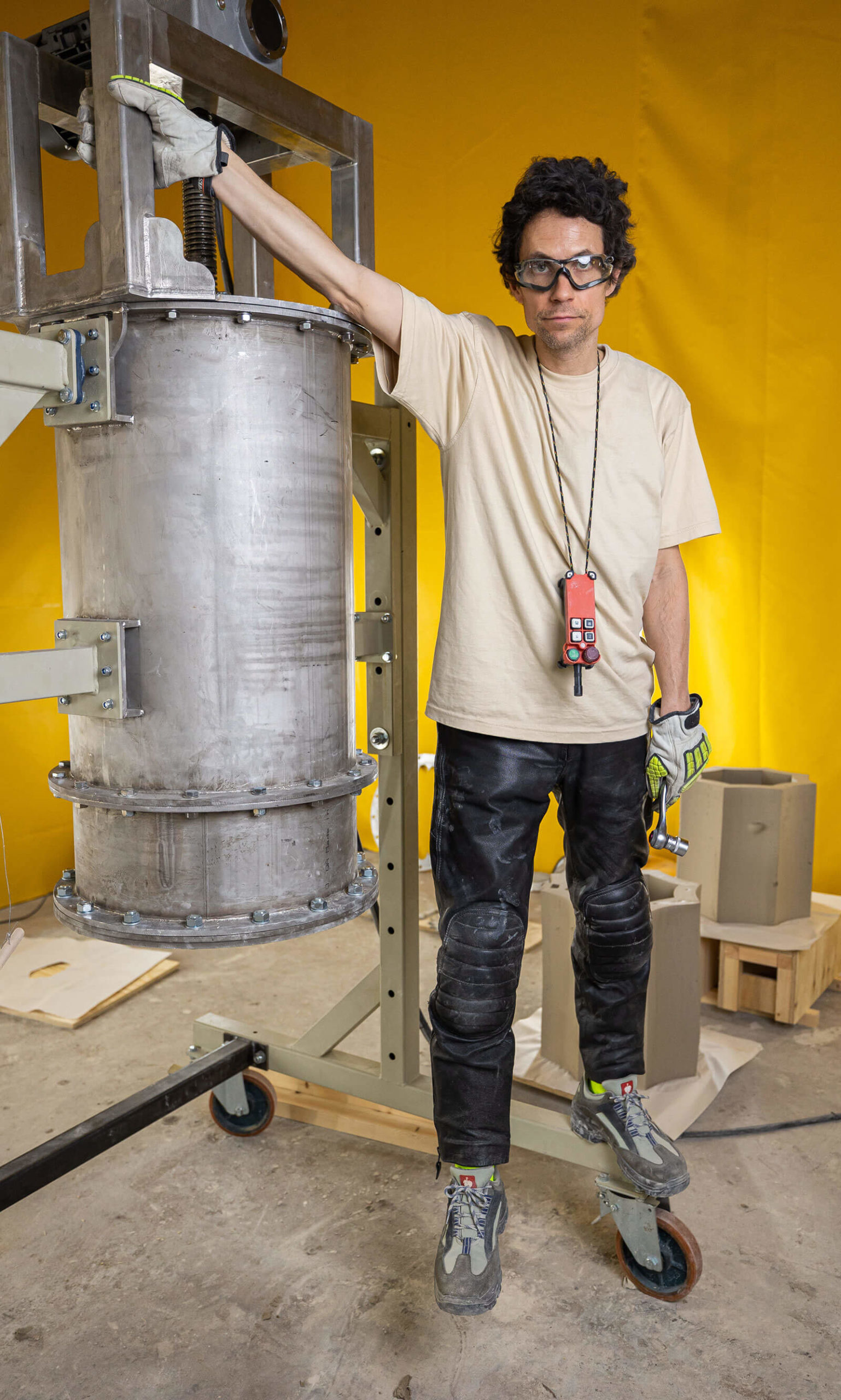
Anton Alvarez, ‘The Remnants at Brookfield Properties’, 2022
COURTESY: Anton Alvarez / PHOTOGRAPH: TwobyTwo Photography
Anton Alvarez: Saff Williams, the curatorial director at Brookfield Properties, contacted me after she saw my exhibition ‘Tight Squeeze’ at Huxley-Parlour Gallery in London. She was interested in a possible collaboration and invited me to take over the 100 Bishopsgate space, as part of which I proposed a performance where I would create the works on site with the help of my self-built clay-squeezing machine – The Extruder.
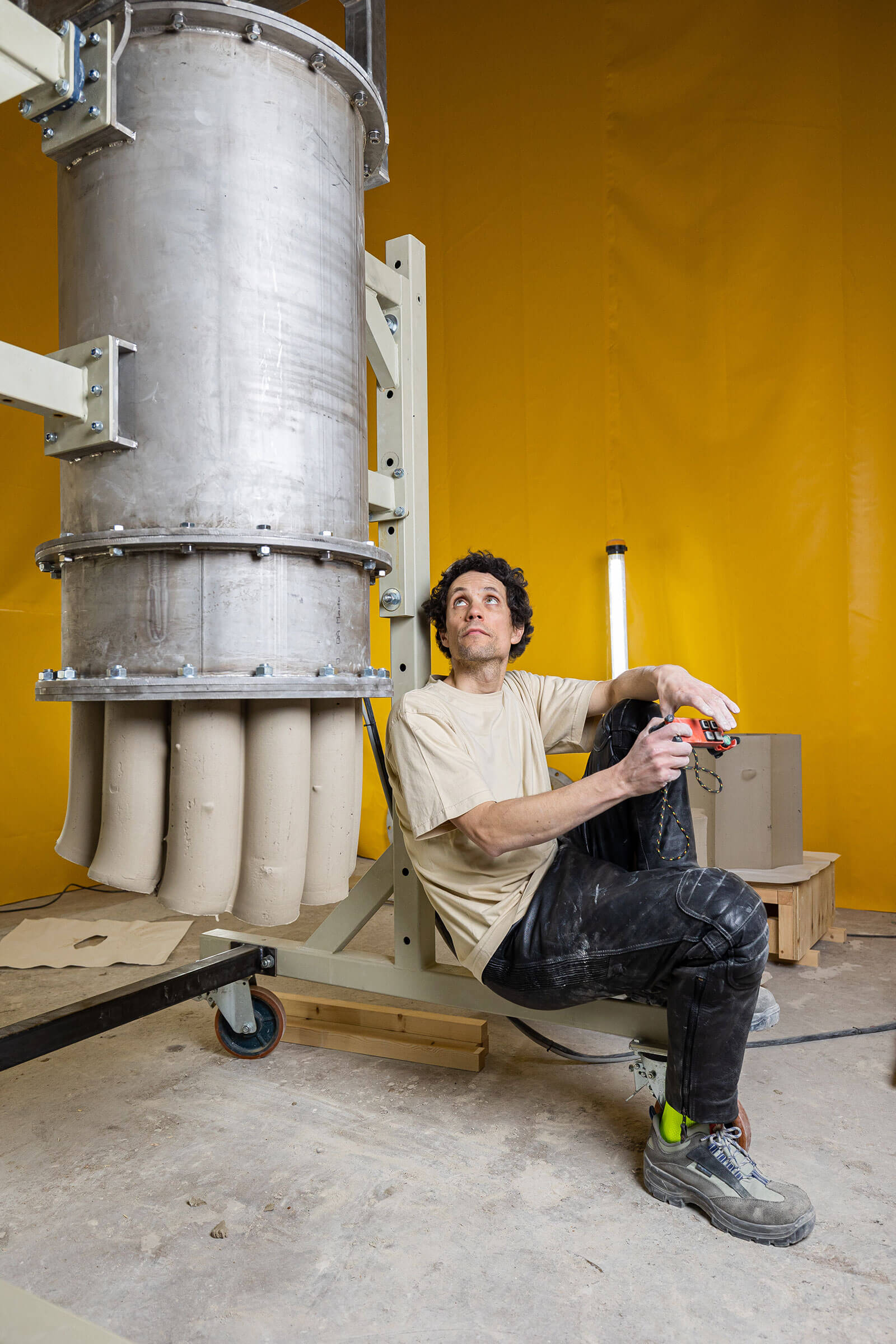
Anton Alvarez, ‘The Remnants at Brookfield Properties’, 2022
COURTESY: Anton Alvarez / PHOTOGRAPH: TwobyTwo Photography
‘The Remnants’ was partly inspired by my upbringing in Chile. I think of clay not only as a sculptural material, but also as an architectural application. With this commission, I’m exploring the architectural aspects of unfired clay, which is used in South America in an architectural technique called adobe.
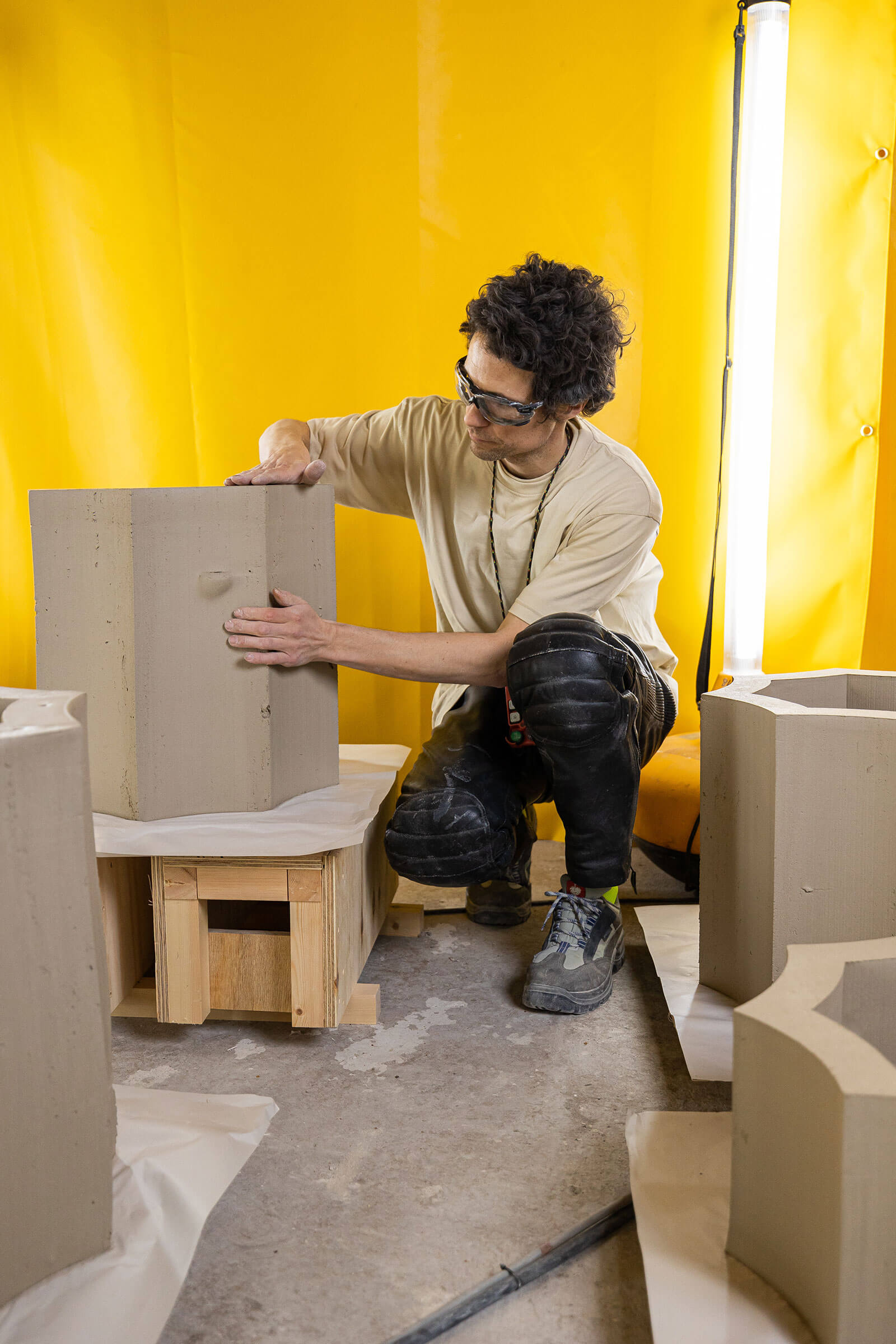
Anton Alvarez, ‘The Remnants at Brookfield Properties’, 2022
COURTESY: Anton Alvarez / PHOTOGRAPH: TwobyTwo Photography
For this project, I ground down sculptures from a previous show and reused the clay, building it into something new. It is the first time I undertook this technique, and I am hoping I can do it again in the future – the clay can be reused an infinite number of times, but it will still have the memory of what it was before; viewers will know that the material had previous lives in Stockholm and in London, instilling more energy into the work.

Anton Alvarez, ‘The Remnants at Brookfield Properties’, 2022
COURTESY: Anton Alvarez / PHOTOGRAPH: TwobyTwo Photography
The workshop at 100 Bishopsgate was filled with my clay and my machine. People could see my two studio assistants and me loading the Extruder and pushing out pieces of clay, which were then stacked on top of each other to create six tall clay column-like sculptures. I chose to enlarge the size of the pieces as the space they’re exhibited in is enormous. The commission enabled me to try a new version of the Extruder, which allowed for larger quantities of clay to be pushed out.
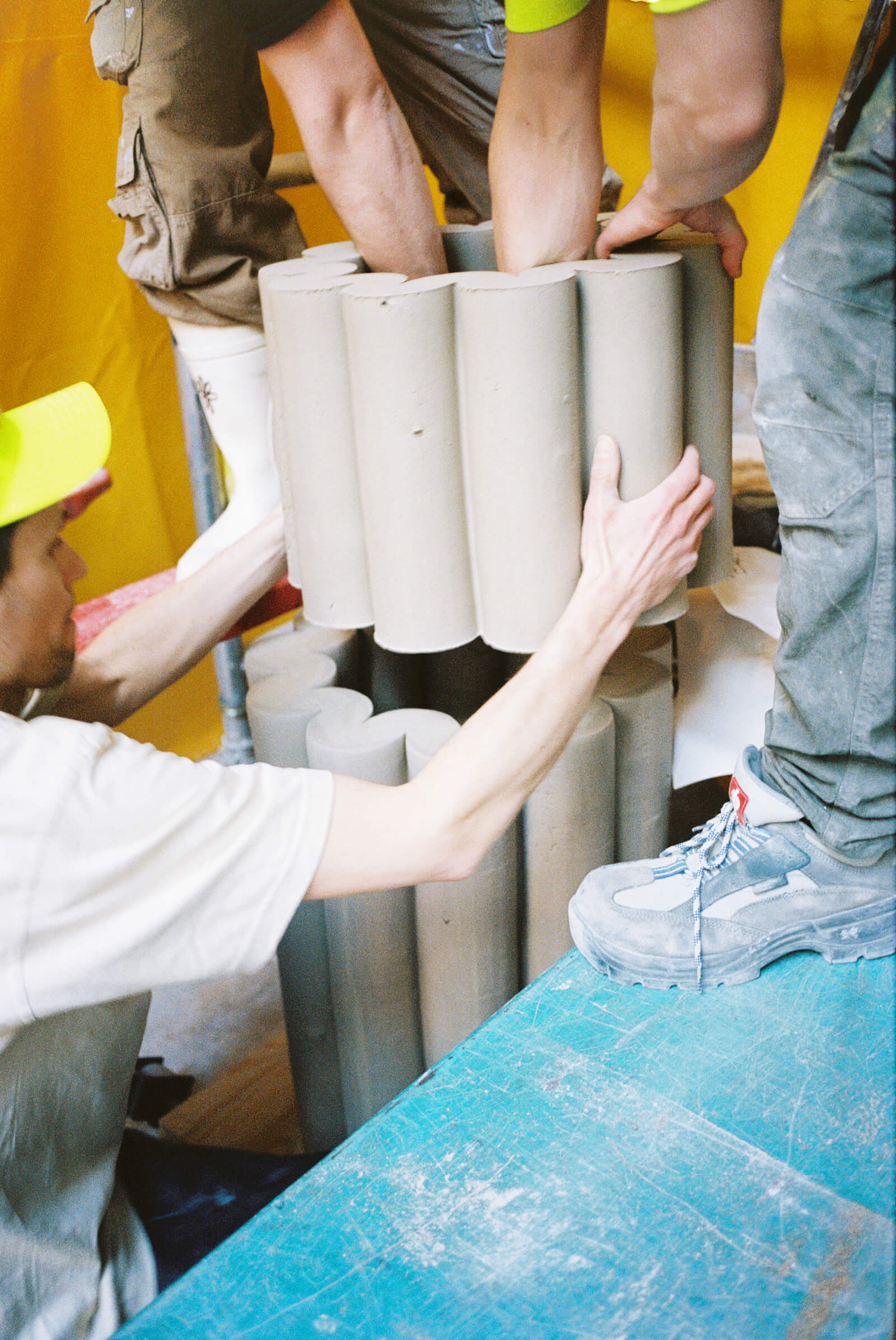
Anton Alvarez, ‘The Remnants at Brookfield Properties’, 2022
COURTESY: Anton Alvarez / PHOTOGRAPH: Isak Berglund Mattsson-Mårn
I finished by spray painting the sculptures in the premises in yellow, pink, bright blue, cream, lilac and orange.
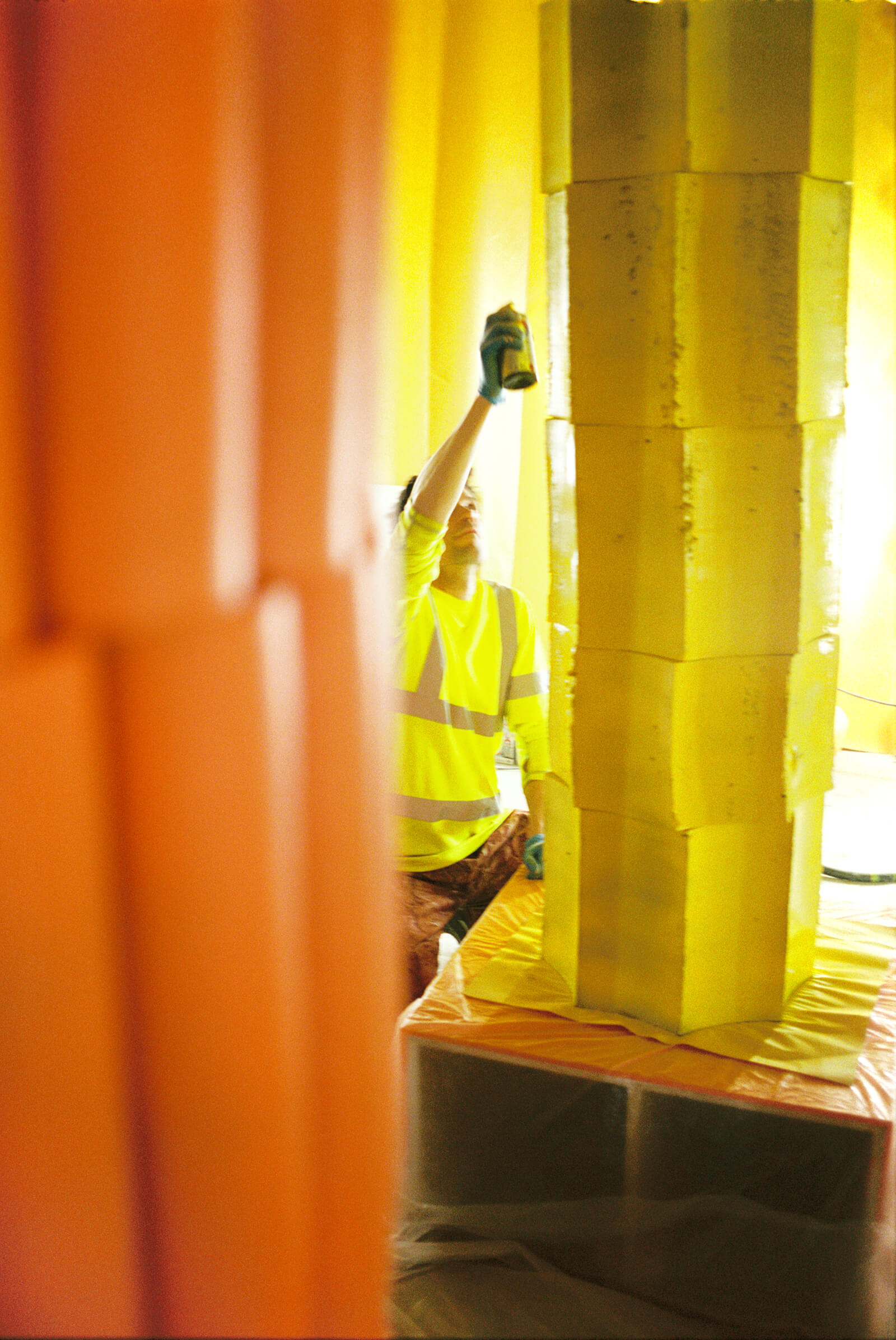
Anton Alvarez, ‘The Remnants at Brookfield Properties’, 2022
COURTESY: Anton Alvarez / PHOTOGRAPH: Isak Berglund Mattsson-Mårn
I did my MA at the RCA. It’s been great to be back in London – a homecoming of sorts after all these years.
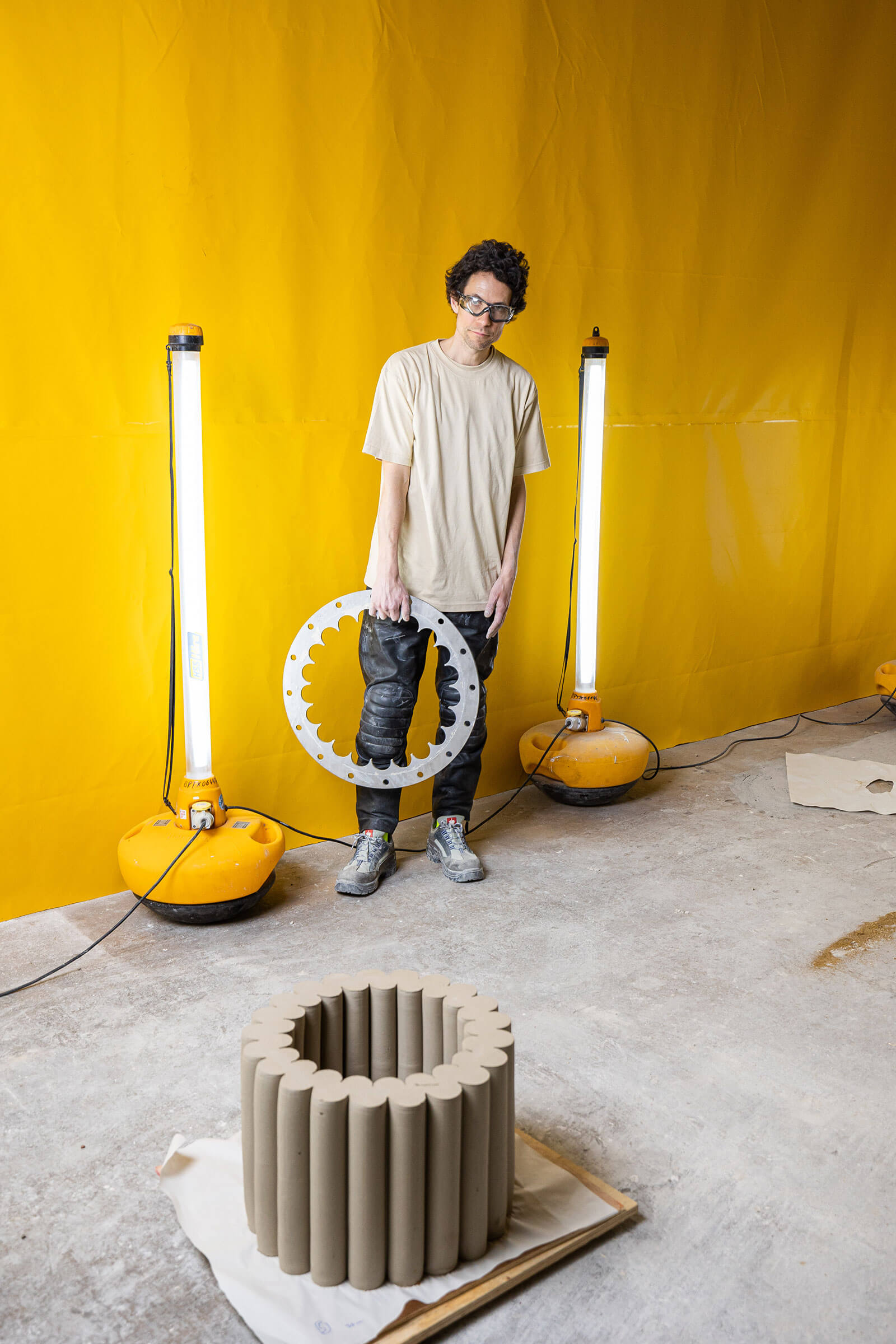
Anton Alvarez, ‘The Remnants at Brookfield Properties’, 2022
COURTESY: Anton Alvarez / PHOTOGRAPH: TwobyTwo Photography
It’s also been exciting to connect with the audience in this way. Producing the exhibition in the same place it will be shown enabled new expressions – even on a practical level. The sculptures would have been difficult to transport, so by creating them on-site, it offered me a new kind of freedom. I could just focus on the space itself, be inspired by it and just push the work to its limits.
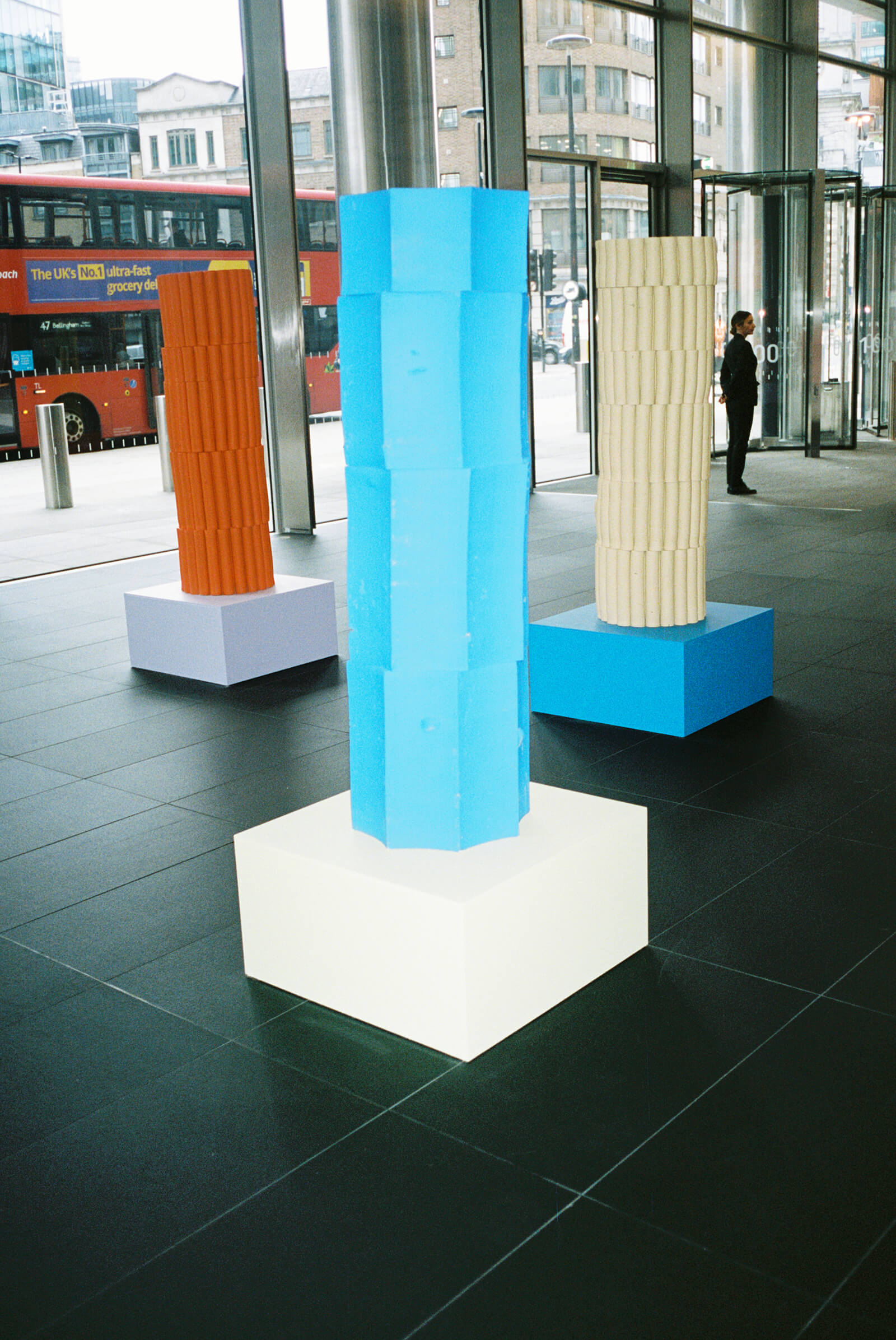
Anton Alvarez, ‘The Remnants at Brookfield Properties’, 2022
COURTESY: Anton Alvarez / PHOTOGRAPH: Isak Berglund Mattsson-Mårn




